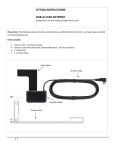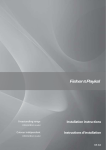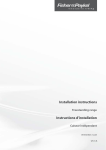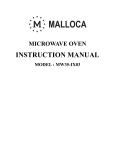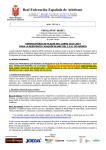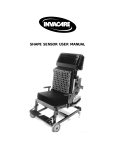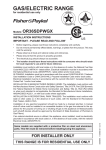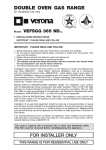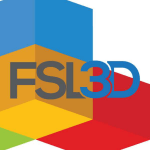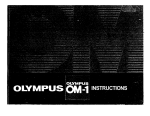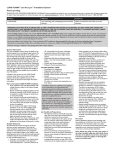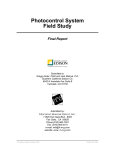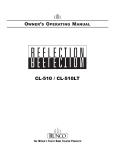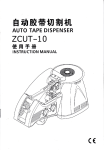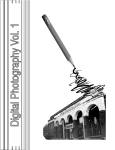Download for ULTIMATTE-5
Transcript
OPERATING INSTRUCTIONS for ULTIMATTE-5 ULTIMATTE CORPORATION 18607 Topham Reseda, Telephone Telex Street California 91335 USA 662453 818-345-5525 Ultimatte RSDA OCTOBER 1985 TABLE OF CONTENTS Page Paragraph CHAPTER l-l 1 - GENERAL DESCRIPTION ................ ................ ................ ................ ................ Introduction . . . . . . . . . . . . . . . Purpose of Equipment . . . . . . . I-2 l-3 1-4 Physical Description . . . . . . . . . Warnings. . . . . . . . . . . . . . . . . . l-5 Unpacking ................ CHAPTER 2 .............................. Power Supply Connections. . . . . . . . . . . . . . . . . . . Main Unit Rear Panel . . . . . . . . . . . . . . . . . . . . . . . Tally Connector . . . . . . . . . . . . . . . . . . . . . . . . . . . 2-5 2-6 Remote Control Rear Panel . . . . . . . . . . . . . . . . . . Connections . . . . . . . . . . . . . . . . . . . . . . . . . . . . . . Typical 2-8 2-9 Setup for NTSC Background . . . . . . . . . . . . . . . Connection of Multiple Remotes . . . . . . . . . . . . 2-l 1 2-12 2-13 . . . . . . . . . . . . . . . . l-l l-l l-l . . ... . . . . Introduction 2-7 2-10 . . . . . . . . . . . . l-l l-l - INSTALLATION 2-2 2-3 2-4 2-l ....... ....... ....... ....... Setup . . . . . . . . . . . . . . . . . . . . . . . . . . . Connection of Multiple Remotes and Main Units Important Considerations . . . . . . . . . . . . . . . . . . . . Power-up Procedure . . . . . . . . . . . . . . . . . . . . . . . . Delay Line Adjustments . . . . . . . . . . . . . . . . . . . . . . . . . . . . . . . . . . . . . . . . . . . . . . . . . . . * * . . . . . . . . . ... . ... 2-l 2-l 2-l 2-5 . . . . 2-5 2-5 ... 2-5 2-7 ... ... * 2-7 . 2-8 . . . . . . . * . . . ... ... 2-8 2-9 . 2-9 . . . . . . . . . . 3-1 . . . 3-l 3-l CHAPTER 3 - BASIC REQUIREMENTS 3-l Introduction . . . . . . . . . . . . . . . 3-2 3-3 Cameras . . . . . . . . Selection Criteria . . . . . . 3-4 3-5 Detail or Contour Control . . Diffusion or Fog Filters . 3-6 3-7 3-8 Tube Focus and Beamwidth Registration Adjustment . . White and Black Balance . 3-9 3-10 3-l 1 3-12 3-13 3-14 3-15 Backing . . . . . . . . . . . . . . . . . . Color Purity . . . . . . . . Lighting the Backing . . . . Texture of Backing. 3-16 Lighting . . . . . . . . . . Amount of Light . . 3-l 7 3-18 Lighting Techniques . . . . . Bounce Light . . . . 3-19 Contrast . . . . . . . . . . . . . . . Choice of Blue vs. Green . . Ultimatte Blue Screen . . . . . . . . . I . . . . . . . . . . . . . . . . . . . . . . . . . . . . . . . . . . . . . . . . . . . . . . . . . . . . . . . . . . . . . . . . .... .... .... . . . . . . . . . . . . . . . . . . . . . . . . . . . . . . . . . . . . . . . . . . . . . . . . . . . . . . . . . . . . . 3-l 3-l 3-l 3-l . . . 3-2 3-2 .... . . 3-2 3-2 . . . 3-2 3-3 . . . 3-3 3-4 . . . . 3-4 3-4 .... 3-4 . . . 3-4 TABLE OF CONTENTS (Core) Page Paragraph 3-20 3-21 3-22 3-23 3-24 Temperature . . . . . . . . . . . . . . . . . Lighting . . . . . . . . . . . . . . . . . . . . Polarizing Filter . . . . . . . . . . . . . . . . . . . . . Encoders . . . . . . . . . . . . . . . . . . . . . . . . . . Testing Encoder . . . . . . . . . . . . . . . . . . . Color Floor ...... ...... ...... . ................... ................... ................... . 3-4 . . 3-4 . . . . . 3-5 . . . . 3-5 . . . 3-5 . . . . . . . . . . . . . . . . . . . CHAPTER 4 -OPERATING INSTRUCTIONS 4-1 4-2 4-3 4-4 4-5 4-12 4-19 4-25 4-29 4-34 4-38 4-42 4-47 4-48 4-54 4-55 4-59 4-65 4-69 Introduction .................. Preparation for Use . . . . . . . . . . . . Condensed Control I dentif ication Detailed Control Identification . . . FG Select . . . . . . . . . . . . . . . . . . . . BG Select . . . . . . . . . . . . . . . . . . . . FG Matte . . . . . . . . . . . . . . . . . . . . FG/BG . . . . . . . . . . . . . . . . . . . . . . FG/Color Logic . . . . . . . . . . . . . . . FG Adjust . . . . . . . . . . . . . . . . . . . BG Matte . . . . . . . . . . . . . . . . . . . . BG Adjust . . . . . . . . . . . . . . . . . . . . . . . . . . . . . . . . . . . . . . . . . . . . . . . . . . BG Field. . . . . . . . . . . . . . . . . . . . . Window . . . . . . . . . . . . . . . . . . . . . Component Out . . . . . . . . . . . . . . . B/WLogic . . . . . . . . . . . . . . . . . . . Glow/Title . . . . . . . . . . . . . . . . . . . Matte-l n . . . . . . . . . . . . . . . . . . . . . Program/Memory . . . . . . . . . . . . . . . . . . . . . . . . . . . . . . . . . . . . . . . . . . . . . . . . . . . . . . . . . . . . . . . . . . . . . . . . . . . . . . ................... ................... ................... ................... ................... ................... ................... ................... ................... ................... ................... ..................... ..................... ..................... ..................... ..................... ..................... ...................... . . . 4-1 4-1 .... .... 4-l 4-1 . . . .... 4-5 4-6 . . 4-6 . . . . . 4-8 4-9 . . 4-10 . . 4-11 4-12 ... . 4-13 4-14 . . 4-l 5 4-16 ... . . . . 4-17 4-18 4-19 LIST OF ILLUSTRATIONS Page Figure No. l-l 2-l 2-2 2-3 2-4 2-5 Ultimatte-5 System . . . . . . . . . . . . . . . . . . . . . . . . . . . . Remote Control Unit Power Selector Switch . . . . . . . . . Main Unit Power Selector Switches . . . . . . . . . . . . . . . . Main Unit Rear Panel . . . . . . . . . . . . . . . . . . . . . . . . . . . Remote Control Unit Rear Panel . . . . . . . . . . . . . . . . . . 2-6 2-7 Typical Connection of Ultimatte-5 . . . . . . . . . . . . . . . . . Connection for NTSC Background . . . . . . . . . . . . . . . . . Connection of Four Remotes to One Main Unit. . . . . . . 2-8 2-9 Connection of Multiple Remote and Multiple Main Units Circuit Board F8021 . . . . . . . . . . . . . . . . . . . . . . . . . . . 3-l 4-l 4-2 Set Construction to Eliminate Hard Edge at Back Corner Remote Control Front Panel . . . . . . . . . . . . . . . . . . . . . Foreground Select Control Group . . . . . . . . . . . . . . . . . 4-3 4-4 Background Select Control Group . . . . . . . . . . . . . . . . . Foreground Matte Control Group . . . . . . . . . . . . . . . . . 4-5 Foreground/Background Control Foreground/Color Logic Control 4-6 4-7 4-8 4-9 4-10 4-l 1 Group . . . . . . . . . . . . Group . . . . . . . . . . . . . Group . . . . . . . . . . . . . . . . . Foreground Adjust Control Background Matte Control Group ................. Background Adjust Control Group . . . . . . . . . . . . . . . . . Background Field Control Group . . . . . . . . . . . . . . . . . . 4-12 4-13 Window Control Group . . . . . . . . . . . . . . . . . . . . . . . . . Component Out Control Group . . . . . . . . . . . . . . . . . . . Black/White Logic Control Group . . . . . . . . . . . . . . . . . 4-14 4-15 4-16 Glow/Title Control Group . . . . . . . . . . . . . . . . . . . . . . . Matte-In Control Group . . . . . . . . . . . . . . . . . . . . . . . . . Program/Memory Control Group . . . . . . . . . . . . . . . . . . . , . . . . . . . . . . . . . . . . . . . . . . . . . . . . . . . . . . . . . . . . . . . . . . . . . . . . . . . . . . . . . . . . . . . . . . . . . . . . . . . . ............. ............. ............. ............. ............. ............. ............. ............. ............. ............. ............. ............. ............. ............. ............. ............. ............. ............. ............. ............. ............. ............. ............. ............. ............. . . iv 2-l . . 2-2 2-4 . 2-5 2-6 . 2-6 2-7 . 2-8 2-10 . 3-3 4-2 . 4-5 4-6 . 4-7 . . 4-8 4-9 4-10 4-l 1 4-12 4-13 4-14 4-l 5 4- 16 4-17 4-18 4-19 LIST OF TABLES Table No. l-l 2-l 4-l Page Ultimatte-5 Specifications . . . . . . . . . . . . . . . . . . . . . . . Main Unit Rear Panel Connections . . . . . . . . . . . . . . . . . Summary of Operating Controls and Indicators . . . . . . . . . . . III REMOTE CONTROL UNIT MAIN UNIT Figure l-l. Ultimatte-5 System iv CHAPTER 1 GENERAL 1-4. l-l. INTRODUCTION. This is the operation manual for the Ultimatte-5 manufactured by Ultimatte Corporation, Reseda, California. This manual is divided into four secGeneral Description, Installation, Basic tions: Requirements, and Operating DESCRIPTION Instructions. A sep- WARNINGS. Before power to the Ultimatte-5 unit: 1. Verify that power supply is strapped for the power source being used (par. 2-2). 2. Do not make any internal adjustments to potentiometers inside chassis of main unit arate service manual is also available for the Ultimatte-5. or remote control. 1-5. 1-2. PURPOSE OF EQUIPMENT. connecting UNPACKING. for The Ultimatte-5 is normally shipped in two packages, one containing the main unit and one con- the production of composite video images in which a foreground subject is superimposed on one or taining the remote control unit. Carefully remove the units from these two packages and inspect for more layers of background scenes. any damage which may have occurred during ship- 1-3. DESCRIPTION. ping. Check the contents of each package against the enclosed packing list to verify that power The Ultimatte-5 (figure 1-l) consists of two units, cords, instruction manuals, and other accessories are included. Notify your dealer of any discrep- The Ultimatte-5 PHYSICAL is a linear electronic system the main unit and the remote control unit. The two units are interconnected by a single coaxial cable. One remote control unit may be used to provide control signals for up to four main units. Conversely, up to four remote control units may be connected to a single main unit. Both the main unit and the remote control are configured for mounting in a 19.inch electronic equipment rack. Specifications applicable to the Ultimatte-5 are given in table l-l. ancies. The blue ana green-colored cards packea with your unit permit testing and initial setup of your unit. These cards are painted with the pure blue and pure green colors which should be used to paint the backings in your studio. A piece of polarizing filter is also included with your unit to permit evaluation of test results when a polarizing filter is placed over the camera lens. 1-l Table l-l. Ultimatte-5 Specifications Size: Main Unit Remote Control 19 in. wide x 7 in. high x 19 in. deep Power Source Both rnain unit and remote control are individually connected to a 19 in. iwide x 7 in. high x 4 in. deep source of ac power. Depending on internal power supply connections, this may be 115 vat 60 Hz or 230 vat 50 Hz. Random Access Memory Glow or Titles 32K in each main unit permits up to four control setups to be stored for each of eight program sources. Inserts solid or transparent glow or titles from an external character generator. External Matte (Key) Signal Accepts external matte (key) signal. Inputs Accepts all inputs. RGB/Y Y IQ(YUV)/NTSC(PAL). outputs Y RGB/Y, R-Y, B-Y/YIQ/NTSC MIX/MATTE + a n d -. Black Burs Requires connection of external black burst input for timing (sync). Windows Unit produces soft or hard-edge windows. Produces normal or reverse windows; allows shutoff of background scene within RGB/Y, R-Y, B-Y/Y IQ(YUV)NTSC/ window area. Backing Required Matting logic for blue, green, white, and black backings. Red by reversing blue and red cables. Background Matte Automatic background matte setting. Also provides dynamic background matte tracking through color changes in backing from back wall, through coving, to floor. Black/White Balance Provides RGB black balance and RGB white balance to permit matching of color tones in foreground and background blacks and whites. 1-2 CHAPTER 2 INSTALLATION 2-l. INTRODUCTION. This chapter describes a number of methods for connecting the Ultimatte-5 into a video production setup. All signal connections in and out of the main unit and remote control unit are on customerprovided 75.ohm RG59/U coaxial cables terminated in BNC connectors. 2-2. POWER SUPPLY CONNECTIONS. Units being shipped to North America are set for 115.vat power input. Those being shipped to Europe are set for 230 vat. If it is necessary to verify or change this: 1. On remote control back panel, loosen two ‘/4turn Dzus-type fasteners and remove panel. 2. Set remote control power selector switch (figure 2-l ) to either 115V or 230V. 3. Replace back panel on remote control. 4. On main unit bottom panel, loosen ten %turn Dzus-type fasteners with a Phillips screwdriver and remove panel. 5. Set main unit AC POWER selector switch (figure 2-2) to 115 or 230. 6. If power input is lower than normal, set main unit LINE VOLTAGE selector switch (figure 2-2) to (LOW), which accommodates input power levels of 105 or 210 vat. 7. Replace bottom panel on main unit. 2-3. MAIN UNIT REAR PANEL. Most signal connections to and from an Ultimatte5 unit are made through the connectors on the rear panel of the main unit. The layout of this panel is shown in figure 2-3 and each connection is described in table 2-1. 115Vl23OV SWITCH \ Figure 2-l. Remote Control Unit Power Selector Switch 2-l Figure 2-2. Main Unit Power Selector Switches Table 2-l. Main Unit Rear Panel Connections Function Connection TALLY Eight lines are connected here from the external switcher so that as each program source (camera or recorder) is selected by the switcher, the Ultimatte-5 can select the corresponding control settings from memory. (See par. 2-4.) REMOTE 1-4 ’ OUTPUTS: YRGB Normal output signal to external encoder. For connection to component analog tape recorder. Format is front-panel selectable by COMPONENT OUT SELECT switch. Y,R-Y,B-Y or Y IQ NTSC MIX 2-2 Permits connection of four remotes to one main unit. Unit under controt is as selected by front panel PROGRAM/MEMORY ULTIMATTE SELECT 1-4 switches. I Used generally when background scene is from an NTSC or PAL source. MATTE - o r + Positive and negative matte signals are provided simultaneously so they may be recorded for future processing. WINDOW MON When T-connected to a monitor, permits viewing window positions. Table 2-l. Main Unit Rear Panel Connections (Cant) Function Connection INPUTS: All inputs are looped. BLACK BURST This signal provides all timing information required by the Ultimatte. Sync and blanking are generated internally. EXT WINDOW May be used to insert a second window from the external sources. MATTE Accepts a recorded matte signal for reverse order of crossing and postproduction cornpositing. GLOW Permits connection of titles from external character generator or connection of glow input. BG INPUTS: The four background source inputs may be connected simultaneously and then be selected by the BG SELECT switches. These are, for example: NTSC An NTSC (or PAL) signal from a tape machine or camera. YRGB A Y RGB signal from a camera or telecine converter (or second RGB). RGB An RGB signal from a camera. Y,R-Y,B-Y/YIQ(YUV A signal from a component analog tape machine. FG INPUTS: Four foreground inputs may be connected simultaneously and then be selected by the FG SELECT switches. These are, for example: YRGB A Y RGB signal from a camera or telecine converter (or second RGB). RGB An RGB signal from a camera. Y,R-Y,B-Y/YIQ(YUV A signal from a component analog tape machine. NTSC MIX Any processed foreground signal encoded to NTSC (or PAL) format may be returned to the unit for combining with an NTSC (or PAL) background. 2-3 2-4 2-4. TALLY CONNECTOR. The mating plug for the rear panel TALLY connector is supplied and is a 15-pin subminiature “D” connector. Tally inputs to this connector from the external switcher may be a closure to ground, a logic level to ground, or a momentary contact to ground. The circuitry is prioritized so that if more 10 11 Ground Ground 12 13 Ground Ground 14 15 Ground Ground 2-5. REMOTE CONTROL REAR PANEL. than one closure is received simultaneously, the highest tally number will be displayed. The rear panel of the remote control unit (figure Pin number assignments on the “D” connector are: 2-4) contains four BNC connectors for connection of control cables to up to four Ultimatte-5 main 1 2 Camera 1 3 Camera 3 Camera 4 4 5 6 7 8 9 Camera 2 Camera 5 Camera 6 units. 2-6. CONNECTIONS. Methods of connecting the Ultimatte-5 are shown in figures 2-5 through 2-8. Each setup is described in the following paragraphs. Camera 7 Camera 8 Ground 2-7. TYPICAL SETUP. (See figure 2-5.) In the typical setup, the Ultimatte-5 processes a foreground Figure 2-4. Remote Control Unit Rear Panel 2-5 REMOTE CONTROL UNIT t FOREGROUND INPUT BLACK BURST BACKGROUND INPUT RG B---c c R---+ G - OUTPUT NTSC MAIN UNIT EXTERNAL + .---B--- OR PAL OUTPUT Bd Figure 2-5. Typical Connection of Ultimatte-5 FOREGROUND INPUT MAIN UNIT BLACK BURST------d BACKGROUND NTSC INPUT NTSC (PAL) MIX OUTPUT Figure 2-6. Connection for NTSC Background 2-6 - scene and a background scene to produce an RGB composite output to an external encoder. The encoder further processes the signals to a video processed, then encoded to an NTSC format and then mixed with the background to obtain an NTSC composite. recorder format such as NTSC or PAL. As in figure 2-6, foreground input could be in any Note that all input and output connections are selectable format with an RGB output to the external encoder. The encoder produces a composite in made to the rear panel of the main unit, which is connected to the remote control unit by a single the same format as the background, which is mixed coaxial cable. Black burst is always required for timing information. The foreground input shown in the Ultimatte-5 to produce the composite NTSC (PAL) MIX output signal. as RGB could be in any of the alternate formats such as Y RGB/Y, R-Y, B-Y/YIQ/or YUV. 2-9. Similarly, the background input and Ultimatte-5 output signals could be in any of the selectable formats, as desired. 2-8. SETUP FOR NTSC BACKGROUND. (See figure 2-6.) When the background scene is from an NTSC (or PAL) source, the foreground scene is CONNECTION OF MULTIPLE REMOTES. (See figure 2-7.) One main unit may be controlled by one, two, three, or four remote control units on a priority basis. This makes it possible to control a single main unit from one to four locations (stages) with a corresponding reduction in equipment duplication. The priority is established by connection to the main unit. The remote connected to main unit MAIN UNIT Figure 2-7. Connection of Four Remotes to One Main Unit 2-7 REMOTE 1 connector will have priority whenever it is selected. Selection is made by enabling the correspondingPROGRAM/MEMORY ULTIMATTE SELECT I-4 switch on the front panel of the remote control. If the ULTIMATTE SELECT switch on remote control 1 is deselected, control reverts to remote control 2, then in turn to remote con trol 3 and remote control 4. one main unit would be the input to the other so that the composite created at the first level becomes the background for the second level. If the same person is used as the foreground subject in two successive levels, he will appear as “twins” in the final composite. 2-l 1. IMPORTANT CONSIDERATIONS. Many factors contribute to picture quality (as will Z-10. CONNECTION OF MULTIPLE REMOTES AND MAIN UNITS. (See figure 2-8.) The Ulti- be discussed in the next chapter). In terms of connections: matte-5 system has the capability for one remote control unit to control up to four main units and 1. It is important that the R, G, and B input and for one main unit to be controlled by up to four remotes. While it is unlikely that the setup shown output cables be of the same type and be of equal length. in figure 2-8 would be used, some combinations of multiple units are frequently desirable. 2. It is important that the timing relationship between background and foreground scenes When making a two-level mix, one remote may be within 0.5 microsecond of one another and within 1.0 microsecond of black burst (par. control two main units. In this case, the output of 2-13). Figure 2-8. Connection of Multiple Remote and Multiple Main Units 2-8 3. During initial setup, route RGB from camera directly to the Ultimatte-5, not through the external switcher. Once a good output is obtained from Ultimatte, the switcher can be cabled in and the results compared. 2. Provide a 75% grey NTSC background from external switcher. 3. Ohserve output of Ultimatte-5 on a picture monitor and on a waveform monitor (if available). 4. It is recommended that all unused inputs to the main unit be terminated with a 75.ohm load. 2-12. POWER-UP white stripe foreground. PROCEDURE. Do not power-up the Ultimatte-5 without first having connected black burst or the power-up circuitry will not function properly. 1 . Connect black burst to main unit rear panel BLACK BURST INPUT. 2 . Connect coax cable from main unit to remote control unit. 3 . Plug in remote control to ac line. 4 . Plug main unit into ac line. 2-13. DELAY LINE 4. Adjust delay lines (as described below) to eliminate any vertical black line which may be observed adjacent to either side of vertical ADJUSTMENTS. When using an NTSC format background, it may be necessary to make an internal adjustment to the delay lines in order to obtain proper timing of foreground and matte signal. Do this adjustment with power on, after the system is in operation and has been satisfactorily checked out otherwise. 1. Aim camera at a blue screen with a white vertical stripe on it (such as a piece of adding machine tape) so that part of blue backing is visible on both side of the white stripe. a . Loosen ten X-turn Dzus-type fasteners from top cover of main unit with Phillips screwdriver and remove top cover. b. Release the three X-turn fasteners that lock top circuit board in place and hinge it back out of the way to gain access to second circuit board (F8021). C Adjust the six delay lines (figure 2-9) by simultaneously moving both input and output jumpers on each delay line from OUT to IN or vice versa. NOTE The delay line on left of figure 2-9 will have the greatest effect; the one on the right (with only one jumper) will have the least effect on the output. d. Attempt to obtain equal white or black lines on each side of white stripe. 5. Reassemble unit and remove any test connections. 2-9 Figure 2-9. Circuit Boar-d F8021 2-10 CHAPTER 3 BASIC REQUIREMENTS 3-1. INTRODUCTION. high quality will produce a better picture than a camera equipped with a zoom lens. Anyone doing The Ultimatte-5 is essentially a “transparent” composite work will save substantial setup time using a set of fixed prime lenses, as there will be device. It performs additions, subtractions, and multiplications of the signals applied to it, but the much less difficulty in judging perspective through final output is always a product of the inputs. Thus, the other factors which affect picture qual- a fixed lens. ity are equally as important as the Ultimatte in determining the quality of the final composite 3-4. image. This chapter discusses the requirements for such related components as cameras, backings, camera in use to prevent excessive “edginess” on foreground images. A moderate edge on the image lighting, filters, and encoders. is quite acceptable when observed from the proper viewing distance, but excessive edginess will defeat 3-2. the CAMERAS. DETAIL OR CONTOUR CONTROL. Carefully adjust the detail or contour control on the by natural-looking the composite normally produced Ultimatte-5. The higher the quality of the signal going into the Ultimatte, the higher will be the quality of the output. The limitation of the Ultimatte to composite 3-5. DIFFUSION OR FOG FILTERS. When an image is the limitation of the camera to resolve diffusion filters or fog filters not be used. These filters introduce excessive noise into the composite that image. Since the Ultimatte operates on the R-G-B components of the video signal, it is important that the camera have relatively quiet signals on all three channels (high signal-to-noise ratios). It is possible shooting composite images, it is recommended that image with the result that foreground figures bleed into blue backings, or vice versa. Black objects may acquire a blue tint. If these filters are used, the results must be examined with great care and adjustments made where necessary. to have a camera which produces a relatively acceptable encoded picture but which has a large amount of noise on one channel. After processing in the Ultimatte, that noise may deteriorate the final composite to a greater extent. Most cameras will produce acceptable results under good conditions. It is when conditions are less than ideal that the differences among cameras become more noticeable. These conditions include 3-6. TUBE FOCUS AND BEAMWIDTH. If one of the camera’s color tubes is slightly out of focus, fringing may occur, particularly in longer shots. If the beamwidths of the three tubes differ, edging may be observed on the leading and trailing edges of moving objects. Make sure the camera is in good adjustment at all times. inadequate lighting, forward-falling shadows, and excessive black gloss. 3-7. 3-3. SELECTION CRITERIA. In selecting among direct monitor, but the registration differences will several cameras, first select the one that has the be greatly magnified by the cornpositing process. The Ultimatte recognizes a color edge as the loca- best color registration of all three channels. Next select the one that is the most quiet on all three channels. A camera equipped with a fixed lens of REGISTRATION ADJUSTMENT. A camera with minor registration differences between the three tubes may produce an acceptable image on a tion of an object; thus, a registration error is the same as a physical displacement of that object. 3-l This will be recognized from the presence of oppos- well the unit works and what the backing color ing color fringes on the opposite edges of fore- should be. ground objects. 3-8. WHITE AND BLACK BALANCE. It is important that the camera be properly white balanced and black balanced. When the camera is irised up and down, the white should track through grey and To evaluate blue backings painted with other paints, place a white card against it and shoot the card and a portion of the backing. With the white set at 100 units of video, the blue content of the backing should be 70 units minimum, the green through-the-lens content of the backing should be 35 units maxi- teleprompter is being used, it should be switched on during the white and black balancing proce- mum, and the red content of the backing should be 25 units maximum. While some acceptable backings dures. If a white card is being used for white balance and placed near the blue screen, it should be have been made with other than Ultimatte blue paint, the green backing is much more difficult to placed so that blue bounce light from the backing will not fall on it and cause color distortions. achieve with commercial paint. blacks should remain black. If a 3-9. BACKING. The backing is the painted screen in front of which foreground subjects are photographed. It is most often blue, but may also be green, white, or black. Black and white are primarily used in the production of animated objects. The term “backing” is separate and distinct from the term “background.” Background refers to the background scene which is cornposited with the foreground subjects to produce the final product. 3-10. COLOR PURITY. Ultimatte is a linear system for cornpositing images. Unlike chroma-key, which is a switching system, Ultimatte will provide a composite in all areas of the backing from those which are fully illuminated down into deep shadows. Therefore, the backing color must be uniquely reflective. For this reason, special blue and green paints have been developed and are available from Rosco Laboratories, Inc., Port Chester, New York (and other cities). The blue paint has a very high Be extremely careful of paints that burnish when touched, especially if it is necessary to walk on the backing, as burnish marks will show through as defects in the final image. 3-11. LIGHTING THE BACKING. When there is enough separation to do so, place blue gels on the lights illuminating the blue screen and use white lights on the foreground subject. This will improve the quality of the light from the backing. It is even possible to use a white backing illuminated only by blue filtered light. It is not recommended that backlighted blue transmission screens be used with Ultimatte, as edging and loss of foreground image may resu It. 3-12. TEXTURE OF BACKING. The most important requirement for obtaining a quality composite is a backing of uniform color quality. Any defects in the backing such as seams, wrinkles, scuff marks, or a change in texture from wall to cove to floor will be seen as differences in background intensity when the composite is made. blue reflectance and a very low green reflectance One method of set construction which is useful in (vice versa for the green). The use of this paint is highly recommended. (Also see paragraph 3-14.) eliminating hard shadows or texture changes at the junction of horizontal and vertical surfaces is The sample card enclosed with the Ultimatte-5 shown in figure 3-l. Since there is no actual corner, there will be a minimal difference in reflection should be used in initial tests to demonstrate how from the two surfaces. 3-2 3-13. CHOICE OF BLUE VS. GREEN. The choice of blue versus green backing is determined by the presence of a detail edge from the camera’s detail generator. If a white or yellow foreground subject is being composited with a light-colored background scene, the camera may produce a hard detail edge when photographing the foreground against a blue backing. In this case, a green backing or wardrobe) is too close to the color of the backing. Distortions may result from the substantial signal processing required to discriminate these colors. Switching to a backing of contrasting color solves the problem. Comparison of results with both color backings may be desirable in making the optimum decision. would solve the problem, resulting in a more Red backings may be used for product shots if natural-looking there is no red in the foreground image. However, where people are involved, the use of red backings composite. Conversely, a dark foreground subject being combined with a dark background would photograph more naturally against a blue backing. When there is a substantial contrast between foreground and background subjects (dark against light or light against dark), either backing color will be acceptable. is inadvisable. If a red backing is used for a product shot, reverse the red and blue cable connections for both the input and the output. 3-14. ULTIMATTE BLUE SCREEN. A flexible plastic sheeting has been developed which can be rolled up and down or stretched in a frame. This material has such a high blue reflectance that a A second reason for changing backing color is when the color of a foreground object (solid object wide range of subjects may be composited in front of it. It is recommended for difficult scenes and is VERTICAL SURFACE OF SET GAP ----, Fd HORIZONTAL SURFACE OF SET Figure 3-I. Set Construction to Eliminate Hard Edge at Back Corner 3-3 available in sizes up to 40x100 feet from Stewart Filmscreen Corp., Torrance, California. To date, no blue or green paper has been found suitable as 3-18. BOUNCE LIGHT. When setting up a shot, backing processed, the backing and most of the bounce material. some bounce light from the backing will light up the edges of the subject, yet when the image is 3-15. LIGHTING. light from it will be suppressed to black. Think of the backing as a piece of black velvet which reflects no light. Also think about the background scene. If In general, the proper lighting occurs when the amount of incident light (in foot candles) on the it is light and would be expected to light up a subject in front of it, probably more sidelighting of backing is the same as the arnount of incident light the subject is necessary. This is best produced by on the subject. However, the amount of light used is much greater than with normal photography. two light sources, at approximately head level. With a dark background, this sidelighting would not be desirable. 3-16. AMOUNT OF LIGHT. Composite photography in front of a blue screen requires two to three times more light than normal photography. Lens vignetting cannot be tolerated, as it interferes with window generation and other compositing functions and aggravates noise problems. This is Had the subject actually existed as an element in the background scene (rather than being composited into it), whatever brightness existed in the background scene would have illuminated the sides and back of the subject. The blue backing does not pro- less likely to occur at smaller apertures made pos- vide the backlight the scene would have provided sible by higher light levels. and backlighting must therefore be added on the set. As discussed later in this chapter, there are times when it is desirable to use polarizing filters. These 3-19. CONTRAST. filters cut down some of the light to the camera tubes so more light helps to compensate. Approximate contrast between lighting of foreground and background subjects should be accomplished by adjustment of lighting 3-17. LIGHTING TECHNIQUES. W h e n l i g h t i n g on the foreground scene. The Ultimatte-5 contains a FG CONTRAST control which can be used to the set, it must be kept in mind that the amount of add contrast to the foreground subject. light on the backing will determine the extent to which the background scene is lighted in the com- 3-20. COLOR TEMPERATURE. Never use straw- posite. colored filters when lighting a foreground subject. When a key-light shadow is important, start by lighting the set with the key light. Orient the key light to cast a shadow in the same direction as the shadows in the background scene. Then add light as needed to illuminate the backing, being careful not to completely wash out the key light shadow. Only white light is needed. Do not mix the color temperatures of lamps used to light the backing, as this will result in color tinting of the background scene. Lights with a color temperature of 5600°K or 3200° K a r e a c c e p t a b l e w i t h b l u e b a c k i n g s . A blue-colored light should not be used on a foreground subject, as it will cause the subject to be- The intensity of the shadow is thus controlled by the amount of fill added to that shadow. Again, come consider the intensity of the background shadows 3-21. FLOOR LIGHTING. T h e f l o o r s h o u l d b e when making this decision. iighted frorn sources near the camera rather than 3-4. transparent. from overhead lights. Overhead lights may produce 3-23. a glare which the camera will see as white light, and this will appear as flare in the composite. The final picture quality is dependent on the qual- 3-22. ity of the encoder used. Always use a broadcastquality video-type encoder to prevent deteriora- POLARIZING FILTER. The use of the polarizing filter can solve certain problems that will arise with backlighting and with reflective subjects. Floor glare, as mentioned earlier, can result in an unwanted white haze in the final composite. ENCODERS. tion of the final product. 3-24. TESTING ENCODER. When an encoder has been selected for use, it is recommended that it be tested to evaluate the output quality. Connect the RGB from the camera to the input of the encoder, rotate it until the glare disappears. The use of pol- then connect the output of the encoder to the A side of a monitor. Connect the camera’s internal arizing filters on shiny product shots such as automobiles may eliminate the need for deglossing encoder output to the B side of the monitor. Switch between the two to assure that the external encoder spray. is at least as good as the camera’s internal encoder. Polarizing filters are supposedly of neutral density, but frequently are not. It is best to white balance If the external encoder cannot be adjusted to per- Mount the polarizing filter on the camera lens and the camera again with these filters in place. When using a polarizing filter, it is necessary to open the form satisfactorily, the user must accept the fact that the encoder, not the Ultimatte-5, is limiting camera lens one to one-and-one-half stops. This is the final picture quality. This same test should be made with the switcher in and out of the circuit to the reason for using high illumination on the set. evaluate its quality also. 3-5/(3-6 blank) CHAPTER 4 OPERATING INSTRUCTIONS to any position. Before starting operations for a new setup, adjust all controls to their index posi- 4-l. INTRODUCTION. This chapter contains the information required to operate the Ultimatte-5. Each of the 15 control groups on the remote control panel is discussed in detail and the function of each switch or control (potentiometer) is described. There is no standard operating procedure. The Ultimatte-5 is extremely tion and set all switches so that the red indicators are off (to the extent possible). 4-3. CONDENSED CONTROL IDENTIFICATION. versatile and facilitates opera.tion in a broad variety of situations. It is up to each operator to determine the ideal operating sequence for each application. The operating panel of the Ultimatte-5 is shown in figure 4-l. Table 4-l is a condensed explanation of 4-2 PREPARATION FOR USE. 4-4. When the Ultimatte-5 is connected to a power source, it will come on with most switches in their The balance of this chapter contains detailed de- neutral positions. However, controls may be set larged illustration of the controls in each group. the function of each control. DETAILED CONTROL IDENTIFICATION. scriptions of each control group keyed to an en- Table 4-l. Summary of Operating Controls and Indicators Group Name Control Name Function FG SELECT RGB switch Selects an RGB foreground input. Y RGB switch Y/R-Y/B-Y switch Selects a Y RGB foreground input. YlQ(YUV) switch Selects a Y/R-Y/B-Y foreground input. Selects a Y IQ or YUV foreground input. BACKING COLOR switch FG ONLY switch Selects logic for blue or green backing. Permits only foreground image to be viewed. BG SELECT RGB switch Selects an RGB background input. Y RGB switch Y/R-Y/B-Y switch Selects a YRGB background input. Selects a Y/R-Y/B-Y background input. YlQ(YUV) Selects a Y IQ or YUV background input. switch NTSC(PAL) switch BG ONLY switch Selects an NTSC (or PAL) background input. Permits only background image to be viewed. MATTE SET switch Provides silhouette against neutral field for setting density of foreground matte. MATTE DENSITY control Sets matte density appropriate to transparency of FG MATTE subject. 4-1 4-2 Table 4-l. Summary of Operating Controls and Indicators (Cant) r '1 Group Name Control Name Function FG MATTE MATTE DENSITY BAL Optimizes matte density for certain foreground (cant) control BLACK GLOSS control colors. Prevents print-through on dark glossy objects. Permits use of backings with less-than-perfect color BACKING PURITY control balance. FGiBG CLEAN-UP control Allows progressive removal of unwanted foreground detail and backing imperfections. FADE/MIX control Permits foreground to be faded out or FG/BG mix. Proportions foreground removal and background BALANCE control replacement when using CLEAN-UP control. FG COLOR LOGIC GATE 1 control Permits reproduction of blue in foreground subject GATE 2 control (blue backing). Permits reproduction of magenta in foreground GATE 3 control subject (blue backing). Eliminates blue flare on green foreground subjects (blue backing). WHITE BALANCE control Permits adjustment of whites in foreground to match whites in background. FG LEVEL control FG CONTRAST control Provides control of foreground level. Adjusts contrast of foreground subject. BLACK RGB/WHITE controls Permit adjustment of black and white balance to neutral or to match background. FG ADJUST RGB BG MATTE VERT TRACK ENABLE switch RATE control VEIL COLOR RGB BG ADJUST controls BG LEVEL BAL control Enables a dynamic background matte that tracks backing changes. Adjusts how tightly backing changes are tracked. Permit elimination or introduction of veiling. Sets level for background turn-on signal. BG LEVEL control SHADOW control Sets clip for background turn-on signal. BG DE FOCUS control Simulates follow focus when subject approaches Retains forward-falling floor shadows and enhances shadow detail. camera, and for normal-appearing closeups. BG FIELD SELECT switch LEVEL control Replaces background video with flat field. Adjusts level of flat field. COLOR Set color of flat field. RGB controls 4-3 Table 4-l. Summary of Operating Controls and Indicators (Cant) Group Name Control Function Name WINDOW I NT +/- switch Permits window to be a frame (+) surrounding the INT N/R switch subject or an area (-1 which may be placed anywhere. Reverse (R) shuts off background scene in window area. EXT N/R switch Selects normal (N) or reverse (RI for external window input. HOLD BLU/GRN switch Permits holding original blue (or green) color of blue LEFT/RIGHT/TOP/ BOTTOM controls object or reflection within reverse window area. Set each window edge as desired. Complete cw rotation changes from hard edge to soft and vice versa. COMPONENT OUT SELECT Selects output format of OUTPUTS connectors for switch use with component analog recorder. B/W LOGIC B/W logic select switch Sets up logic to composite for either a black or MASTER white backing. Sets threshold at which objects begin to become DENSITY DENSITY R/G/B controls transparent. Permit threshold to be set for each color independently without affecting subject color or brightness, GLOW/TITLE MASTER LEVEL control R/G/B controls DENSITY control FRONT/REAR control Sets level of brightness of glow or title. Set color of glow or title. Sets degree of transparency of glow or title. Glow covers or emanates only from edges. Places titles in front of or behind foreground subject, MATTE IN PROGRAM/ MEMORY INVERT switch Used for reverse order of crossing. PE D control LEVEL control Eliminates setup when used. Compensates for low-level recording ULTIMATTE SELECT 1-4 Select one of four Ultimatte-5 main units which will switches be controlled by remote control unit. TALLY indicator F I LE 1-4 switches Indicates program source selected by switcher. Select one of four previously established setups MEMORY switch from memory. In SET, all controls and switches are live and access memory. On HOLD, unit operates from memory, with 4-4 exceptions. 4-5. FG SELECT. (See figure 4-Z.) 4-7. Y RGB. The luminance-red-green-blue input is from a Rank Cintel scanner, telecine camera, or other device connected to the Y-R-G-B input con- The six foreground select switches are used to configure the unit as desired to process the foreground nectors on the rear panel. This channel may also be used as a second RGB channel with nothing con scene. One of the first four mutually exclusive input selectors is pressed to select the type of fore- netted ground input signal to be used from among those connected to the FG INPUTS connectors on the rear panel of the main unit. The BACKING COLOR switch is set to configure the logic of the unit to the backing color in use and the FG ONLY switch is enabled as desired. All pushbutton selections change during the vertical interval. The remote control may be used as a vertical interval switcher to switch, for instance, from a camera source to a tape player source by selecting the input source desired. The transition will occur during the vertical interval. to the “Y” input connector. 4-8. Y, R-Y, B-Y. The luminance (y), red minus y, blue minus y input is normally from a composite analog tape recorder, camera, or other device connected to the Y, R-Y, B-Y input connectors on the rear panel. 4-9. YIQ (YUV). The Y IQ (or YUV) input is se- lected when a signal source of this format is connected to the YIQ input connectors on rear panel. 4-10. BACKING COLOR. The backing color switch can be set to B to configure the unit for a blue backing color or to G to configure the unit for a green backing color. 4-l 1. FG ONLY. The foreground only switch is 4-6. RGB. T h e r e d - g r e e n - b l u e i n p u t i s n o r m a l l y from a television camera connected to the R-G-B input connectors on the rear panel. used to remove the background scene from the output signal so that foreground only may be viewed. Figure 4-2. Foreground Select Control Group 4-5 Figure 4-3. Background Select Control Group 4-12. BG SELECT. (See figure 4-3.) The six background select switches are used to configure the unit as desired to process the background scene. One of the first mutually exclusive input selectors is pressed to select the type of background input signal to be used from among those connected to the BG INPUTS connectors on the rear panel of the main unit. The BG ONLY switch is enabled as desired. All pushbutton selections change during the vertical interval. 4-16. YIQ (YUV). The YIQ (or YUV) input may be selected when a signal source of this format is connected to the Y IQ input connectors on the rear panel. 4-17. NTSC (PAL). The National Television Standards Committee (NTSC) or European system Phase Alternating Line (PAL) input may be selected when a tape recorder or any other encoded video source in this format is connected to the NTSC input connectors on the rear panel. 4-13. RGB. The red-green-blue input is normally from a television camera connected to the R-G-B 4-18. BG ONLY. The background only switch is input connectors on the rear panel. used to remove the foreground scene from the output signal so that background only may be viewed. 4-14. Y RGB. The luminance-red-green-blue input is from a Rank Cintel scanner, telecine camera, or other device connected to the Y-R-G-B input connectors on the rear panel. This channel may also be used as a second RGB channel with nothing connected to the “Y” input connector. 4-19. FG MATTE. (See figure 4-4.) The foreground matte controls are used to adjust density of the foreground matte, which will optimize the foreground in the final composite output. 4-15. Y, R-Y, B-Y. The luminance (y), red minusy, 4-20. MATTE SET. When enabled, the matte set blue minus y input is normally from acomponent switch causes the foreground subject to appear as analog tape recorder, camera, or other device connected to the Y, R-Y, B-Y input connectors on a black silhouette against an internally generated white field for the purpose of adjusting the other controls in this control group. the rear panel. 4-6 Figure 4-4. Foreground Matte Control Group 4-21. MATTE DENSITY. The matte density con- 4-23. BACKING PURITY. The backing purity trol is used to adjust density of the foreground sub- control is normally set to HI when using the recom- ject from transparent (ccw) to extremely opaque (cw). in use, this control is first set fully ccw. It is mended backing paints (par. 3-10). then turned clockwise until the entire subject silhouette just becomes opaque, but where semi- purity, it is set between HI and LO as necessary to obtain a background scene turn-on signal. transparent areas of the subject remain semitransparent. If this control is advanced too far, dark edges may appear around the foreground subject. 4-22. MATTE DENSITY BAL. The matte density balance control is used to improve the edge characteristics of certain colors (mainly reds and greens). However, if a backing is in use which does not have good color For instance, when using a high-quality blue backing, the unit will recognize and properly composite cyan and magenta tones in the foreground subject. If the backing is of lesser color purity, such as cyan or magenta, good cornpositing can still be accomplished by turning this control toward LO, Normally a matte edge is achieved too soon on red subjects. Therefore, i f t h e f o r e g r o u n d s c e n e i s and avoiding the use of cyan and magenta wardrobe. mainly of people’s faces (predominantly red flesh tones), adjust this control in the ccw direction to drop some of the red from the turn-on signal. 4-24. BLACK GLOSS. The black gloss control is If the scene is of green foliage, adjust this control cw to drop some of the green from the turn-on signal. Where both reds and greens appear in the foreground scene, adjust the control for optimum edge characteristics on the most important elements in the scene. adjusted to prevent dark, shiny objects in the foreground scene from appearing transparent. The use of this control will also increase the density of shadows cast by the foreground subject. Use this control only when necessary or shadows may be accented unnaturally and edges may start to appear hard. 4-7 Figure 4-5. Foreground/Background Control Group FADE MIX 4-25. FG/BG. (See figure 4-5.) The controls in the foreground/background 4-27. FADE/MIX. The fade/mix control has two group are used to adjust the relative densities or importance of the foreground subject as opposed to the background scene. 4-26. CLEAN-UP. T h e c l e a n - u p c o n t r o l c a n b e adjusted to cause the background scene to turn on sooner than it would ordinarily while simultaneously partially turning off the foreground subject in its most transparent areas. This is useful for removal of unwanted foreground detail such as support wires or footprints and for removal of backing imperfections such as seams or joints. functions, depending on the position of the FG SELECT/FG ONLY switch (par. 4-5/4-l 1). When FG ONLY is off, this control is in the fade mode and when FG ONLY is on, it is in the mix mode. In the fade mode, the fade/mix control may be adjusted to gradually fade out the foreground subject, ultimately leaving only the background scene in the output. In the mix mode, both the foreground and background subjects fully appear in the output superimposed on one another. The relative strength of Also, if the backing contains a seam or wrinkle the two scenes is determined by rotation of the control. This mode is useful for arranging set pieces which is visible in the composite output, the cleanup control can be adjusted to remove this seam or in the foreground so that they match objects in the background scene. wrinkle. 4-28. The clean-up control should be moved from its index marks only when necessary for the types of conditions described above, as use of this adjustment removes fine-edge detail from the image. 4-a BALANCE. The balance control proportions the clean-up between the FG and BG and should be adjusted with each increment of clean-up to obtain the most pleasing picture. (The balance control also affects the fade/mix function.) Figure 4-6. Foreground/Color Logic Control Group WHITE BALANCE 4-29. FGKOLOR . GATE 3 LOGIC. (See figure 4-6.) The controls in the foreground color logic group permit adjustments to be made so that specific colors in the foreground subject can be reproduced naturally in spite of technical difficulties which might otherwise interfere with natural reproduction. 4-30. GATE 1. The gate 1 control is adjusted to permit blues in the foreground subject to be reproduced when using a blue backing (otherwise blue foreground objects will appear cyan). Gate 1 allows the blue of R-G-B to rise above green to the extent that green was above red. Thus, a blue shirt on the foreground subject will remain blue, because in a blue shirt there is more green than red. However, blue light from the backing failing on a white shirt will not be seen as blue flare because green did not rise above red in the lighting of the white shirt. There is a slight increase in noise level when using gate 1, 2, or 3. In the case of green backing, gate 1 permits greens in the foreground subject to be reproduced. 4-31. GATE 2. The gate 2 control is adjusted to permit magentas in the foreground subject to be reproduced when using a blue backing. Gate 2 allows the blue of R-G-B to rise above green to the extent that red was above green. When gate 2 is open, facial tones may have a slight purplish cast to them. Gate 2 is used only when purple (magenta) is important in the wardrobe or foreground subject. In the case of a green backing, gate 2 permits yellows in the foreground subject to be reproduced. 4-32. GATE 3. The gate 3 control is adjusted to eliminate blue flare on green foreground subjects (such as plants) when using blue backing. Gate 3 prevents the blue of R-G-B from rising above the lower of red or green. When gate 3 is in use, cyan and blue colors in the foreground scene will be distorted to a greenish cast, and thus should be used only when reproducing green plants against a blue backing. In the case of a green backing, gate 3 prevents a cyan flare on blue foreground objects. 4-33. VVHITE BALANCE. The white balance control permits adjustments of maximum blue of foreground subject whites to match background white. In the index position, blue of R-G-B is made equal to R-G-B for white; however, if a foreground subject has light blonde hair which is reproducing nearly white, this control may be adjusted for more natural reproduction of hair color. This will also result in somewhat warmer than normal white tones on other white objects in the foreground. 4-9 l Figure 4-7. Foreground Adjust Control Group LEVEL G FG CONTRAST 3 BLACK WHITE 4-34. FG ADJUST. (See figure 4-7.) The foreground adjust group contains eight controls for the purpose of achieving special adjustments to the level, contrast, and color balance of the foreground subject. They do not affect matting functions or background picture. 4-35. FG LEVEL. The foreground level control permits adjustment of the level of the foreground scene relative to the level of the background scene. For instance, when simulating night scenes, a reduction in foreground level may be desired. At other times, this control may be manipulated to match the overall appearance of the foreground to that of the background. 4-36. FG CONTRAST. The foreground contrast control increases contrast of the foreground sub- 4-10 ject by making dark areas even darker. It is especially useful in simulating night scenes. It may also be used to match sunlit backgrounds or to increase foreground contrast to match the contrast of the background tape. 4-37. BLACK RGB-WHITE RGB. The black R-G-B and white R-G-B controls permit the color mix of black and/or white subjects in the foreground to be matched to that of similar objects in the background. This color matching of foreground/ background whites and foreground/background blacks is vital to a realistic-looking composite. It is more desirable to make these adjustments in the Ultimatte-5 than in the camera, as the camera color controls should always be left at standardized levels. These controls are somewhat interactive and black should be matched before white. Figure 4-38. BG MATTE. (See figure 4-8.) The background matte comprises those circuit functions which cause the colors in the blue backing to be reduced to zero. Thus, the backing area which was blue will now appear to be black and the background scene can then be superimposed in this black area. This background matte is set automatically by the Ultimatte-5 as a function of the backing color and brightness. The background matte controls are used to make manual override adjustments to the automatic adjustments. 4-39. VEIL COLOR/f?GB. When excessive noise appears on one color channel, a red, green, or blue veiling may appear on the background scene. This can be eliminated by adjustment of the corresponding veil color control. In order to simulate underwater scenes or to en hance reflections on glass, green veiling may be 4-8. Background Matte Control Group 4-40. VERT TRACK ENABLE. When using a backing which is a vertical wall at right angles to the camera, plus a floor which is at an oblique angle to the camera, the difference in camera angle to the two surfaces may produce a white haze or veiling in the floor area. This condition can be compensated for with the vertical track enable switch in conjunction with the rate control. The rate control is advanced just until the milky veil disappears from the floor area, thus resetting the matte on a line-by-line basis from wall to floor to eliminate veiling. This technique retains all of the resolution the camera had before this correction and is superior to using the veil color controls alone. 4-41. RATE. T h e r a t e c o n t r o l a d j u s t s d y n a m i c tracking as to how tightly backing changes are tracked (see previous paragraph). Before engaging added to the scene. Other similar effects are the vertical track and rate controls, the BG adjust shadow control (par. 4-45) should first be adjusted possible. to eliminate as much veiling as possible. 4-11 I____^ 86 ADJUST - 86 LEVEL BAIL BG LEVEL Figure 4-9. Background Adjust Control Group adjustment of the BG level balance control in order 4-42. BG ADJUST. to make the window edges invisible. (See figure 4-9.) 4-45. SHADOW. The shadow control is used when The background adjust group contains four controls which are used to achieve adjustments of the background: level, balance, shadow, and focus. 4-43. BG LEVEL. The background level control permits adjustment of the level of the background scene relative to the level of the foreground scene. This may be useful in simulating night scenes or in matching overall appearance of background and foreground. the subject is backlighted or is casting a visible shadow. Because the shadow area is below clipping ievel, any noise in the camera tends to occur in the shadow. The shadow control substitutes a second control signal in the shadow area which causes the shadow noise to be reduced by 9 to 12 dB. Further, in backlighted situations where glare is present, the glare would ordinarily obliterate the shadow or invert it. The shadow control will, in this situation, remove the glare, causing the shadow to be fully visible and darker than its surroundings, 4-44. BG LEVEL BAL. T h e b a c k i n g m a y n o t always be uniformly illuminated, yet the brightness 4-46. BG DEFOCUS. The background defocus of the backing produces a linear signal which turns on the background picture in proportion to the control does not function with NTSC or PAL backgrounds. It does function with RGB, YRGB, and brightness level component signals. It progressively limits the band- balance control may be used to change the level at which variations in backing brightness affect the width of the background channels so that during a close-up of a foreground subject, the background turn-on of the background, thus achieving a more scene will not be in sharp focus. This results in a simulation of the normal relationship between fore- uniformly of the bright backing. background The background scene. The background level balance control is also used in conjunction with the windows (par. 4-48). When windows are being used, it is necessary to make 4-12 ground and background focus. A follow-focus effect can be achieved by progressive use of defocus as camera. the foreground subject approaches the BG FIELD Figure 4-10. Background Field Control Group 4-47. BG FIELD. (See figure 4-l 0.) The background field controls are used during production when the background scene is not conveniently available, but it is desired to have something behind the subject. The BG field controls can then be used to produce an artificial background of the desired color. The BG field controls work in conjunction with the window controls (par. 4-48). To use the BG field controls: 1. Press BG FIELD SELECT switch and note that red indicator comes on. 2. Select a positive or negative (+ or -) window with the WINDOW +/- INT switch. 3. Select a reverse window by setting the WINDOW N/R INT switch to R. 4. Adjust the WINDOW TOP/BOTTOM/LEFT/ RIGHT controls so that window will fill the entire background area. 5. Adjust BG FIELD RGB COLOR controls and LEVEL control to obtain desired hue and density of the background color. A second function of the BG field controls is to avoid seeing the background scene through an object in the foreground which is essentially the same color as the backing. Thus, on a closeup of a subject with extremely blue eyes, the eyes may become transparent and the background scene will show through the eyes. In this case, a window is set around the eyes (but not extending beyond the head), and a background field of any color is placed in the window. Then the subject will have normally opaque blue eyes (or eyes of any other color selected for the background field). 4-13 0 d eeai GR 4-48. WINDOW. (See figure 4-l 1.) The use of the window controls permits the camera field to overshoot the backing. The window may be internally or externally generated and may have hard or soft edges. in fact, both an internally and an externally generated window may be used simultaneously on different parts of the picture field. The window controls normally power-up in the off mode. Successively pressing the N/R INT switch g i v e s f i r s t a n o r m a l w i n d o w (N i n d i c a t o r o n ) , a r e v e r s e w i n d o w (R i n d i c a t o r o n ) , o r n o w i n d o w (both indicators off). The same sequence applies to EXT N/R. 4-49. +/- INT. This control permits the internally generated window to be a frame surrounding the subject (t), or an area which may be placed anyw h e r e w i t h i n t h e f i e l d (-1 t o r e m o v e a n i s o l a t e d foreground object. 4-50. N/R INT. When the normal-reverse switch is i n t h e n o r m a l (I\]) p o s i t i o n , t h e b a c k g r o u n d i s turned on and the foreground is turned off within the internally generated window area. In the reverse (RI position, the background scene is turned off in the window area and the background field is 414 Figure 4-l 1. Window Control Group turned on in this area (if selected by the BG field controls, par. 4-47). 4-51. TOP/BOTTOM/LEFT/RIGHT. The top/bottom/left/right controls are used to position each edge of the internally generated window as desired. At power up, the windows come up as hard-edged windows. If it is desired to have a soft edge on any side of the window, turn the corresponding top/ bottom/left/right control to its full clockwise position. The window will then switch to a soft edge on the side selected and the control can be reset as desired. (Changing back to a hard edge is done in the same way.) 4-52. N/R EXT. When an external window from the switcher is connected to the rear panel connector marked INPUTS EXT WINDOW, this control can be used in the same manner as the N/R INT c o n t r o l t o p r o d u c e a n o r m a l (N) o r r e v e r s e ( R) w i n d o w . 4-53. HOLD BLU/GRN. T h e h o l d b l u e / g r e e n switch is used in conjunction with an internally or externally generated reverse window. When activated, it holds the original blue (or green) color of a blue object within the window area which would have otherwise become transparent. This control prevents the background from printing through the window area even though an object close to the backing color is included in the subject. Figure 4-12. 4-54. COMPONENT OUT. (See figure 4-l 2.1 On the rear panel of the unit, output connectors are provided. One set of output connectors (Y RGB) is always available to the encoder. Another set of three outputs is available for use with a component recorder. The component output Component Out Control Group format may be Y lQ(YUV) or Y/R-Y/B-Yas selected by the COMPONENT OUT SELECT switch. Recording the output of the Ultimatte-5 in component form makes it possible to reprocess the recorded signal, adding another level of foreground to it. 4-15 Figure 4-13. Black/White Logic Control Group 4-55. B/W l..OGIC. (See figure 4-13.) white (W) position, the foreground subject becomes linearly transparent as it approaches white. In addition to the use of blue and green backing, black and white may also be used as a backing color. Black and white are used primarily for animation production in conjunction with black-onwhite drawings. 4-57. MASTER DENSITY. The master density control sets a threshold at which objects begin to become transparent. This applies to black objects on a black backing or white objects on a white backing. 4-56. B/W. The black/white switch is a threeposition, alternate-action device. When it is off, the system is working blue (or green) logic. In the black (B) position, the foreground subject becomes linearly transparent as it approaches black. In the 4-16 4-58. R/G/B DENSITY. The R/G/B density controls permit a threshold adjustment to be set for each color independently, without affecting the subject color or brightness. It causes the selected shades of red (R), green (G), and blue (B) to become transparent at a desired brightness level. Figure 4-14. Glow/Title Control Group 4-59. GLOW/TITLE. 4-63. FRONT/REAR. The front/rear control places (See figure 4-14.) the titles in front of (FRONT) or behind (REAR) The glow/title controls permit adding titles from a character generator or a halo-like glow while a composite is being made. This avoids an additional generation of processing to add these effects. Titles will be discussed first. To add titles to the composite, the output of a character generator is connected to the rear panel GLOW input. the foreground subject. Manipulation of this control during cornpositing will cause the titles to walk through the subject. 4-64. GLOW. Glow is produced by looping through a small black and white monitor and camera. Both a negative and a positive matte signal are provided at the rear panel OUTPUTS connectors. The selected output drives a monitor which is photographed by an auxiliary black and white camera. 4-60. RGB. The red (R), green (G), and blue (B) controls permit the titles (or glow) to be colored as desired. This camera is somewhat out of focus and the camera output is fed back into the rear panel GLOW INPUTS connector. 4-61. MASTER LEVEL. The master level control Operation of the glow/title controls when composi- sets the level of brightness of the title (or glow). ting glow is much as described above for compositing titles. The front/rear control causes glow to 4-62. emanate only from the edges of the subject in the REAR position or to envelop the subject in the FRONT position. DENSITY. The density control permits adjustment of the opacity or transparency of the title (or glow). 4-17 Figure 4-15. Matte-In Control Group 4-65. MATTE-IN. (See figure 4-15.) nence and visibility. It is a white signal in which the subject (or any solid object) looks like a sil- The matte-in controls, in conjunction with the rear panel MATTE INPUTS connectors, permit houette (black), shadows look grey, transparent production of multiple-layer mattes. This feature objects look grey, and the fully turned-on backing area looks white. This signal is used to turn on the permits the introduction of a recorded matte signal for postproduction composites or for reversed order of crossing. (A second subject may be made background scene. Although it looks like a monochrome signal, it has sync and burst on it, which makes it easy to record. to pass behind, in front of, or circle a previously matted subject whose matte signal was recorded.) 4-66. INVERT. The invert control is used to The use of recorded inputs requires that the fore- create reversed orders of crossing for two foreground subjects. ground NTSC output be recorded on one tape machine and the MATTE signal on another. These 4-67. PED. T h e p e d e s t a l c o n t r o l i s a d j u s t e d t o two recordings must be time coded and then played back simultaneously together with a back- eliminate print-through caused by the pedestal on a tape machine output. ground scene to create a composite. 4-68. LEVEL. The level control adjusts the overThe matte or key signal is a linear signal which all level of the matte or key signal applied to the represents the original backing in terms of its lumi- Ultimatte-5. 4-18 Figure 4- 16. Program/Memory Control Group 4-69. PROGRAM/MEMORY. (See figure 4-16.) The Ultimatte-5 employs a 32K random access memory to store control settings for up to eight program sources (cameras, other Ultimattes, or tape machines). Four files are available for each program source so that time-consuming setup conditions may be recreated by setting two or three switches. 4-70. ULTIMATTE SELECT. A remote control unit may control up to four Ultimatte-5 maim frames, When the unit is powered up, Ultimatte-1 is selected and the remote will be effecting control settings in the unit connected to the REMOTE 1 connector on the rear panel. the switcher. The tally indicator is operated from inputs the switcher applies to the TALLY connector on the rear panel of the remote. If the remote unit is not connected to any main unit (all ULTIMATTE SELECT switches off), the tally will indi^^*^ n CdLt: U . 4-72. FILE. The file l/2/3/4 s w i t c h e s c o n t r o l access to the four memorv files that are available for each program source. At power on, file 1 is activated and setting any control on the remote panel sets the control position on the Ultimatte-5 unit to which it is connected, and also sets the control position into memory file 1. Subsequently, selecting files 2, 3, and 4 permits storing into memory up to four sets of control settings for each To deselect unit 1, press ULTIMATTE SELECT 1 program source. These preset control files may then be recalled as desired when producing a new switch. The indicator on switch 1 will go out and no further control operation on the remote panel composite image. The files follow the tally and for each tally selected will return to the last file used will affect that unit. However, the previously selected remote control settings will be retained in for setting up that input. the memory of the main unit. 4-73. MEMORY SET/HOLD. At power up, the memory switch is in the SET position. This means 4-71. TALLY. The tally indicator shows, by means of a seven-segment display, a number from 1 to 8 that all front panel controls are live and access the memory. In the HOLD position, the unit operates corresponding to the program source selected by from the memory file selected. 4-19 In HOLD, the physical positions of the front-panel that all lighting and camera changes and all con- controls will not correspond with their positions stored in memory. However, to make a control trol settings will produce a corresponding change in bias voltages. After returning from the HOLD active during HOLD, rotate it at a speed greater than 15 degrees per second and then make the adjustment desired. The new control position will mode, adjustment of a window control, for instance, will not affect bias and the SET indicator be stored into memory for that file. To return the MEMORY switch to SET, press it in and hold for two seconds, observing that the HOLD indicator goes out and the SET indicator comes on. There are two different SET modes. One does not affect biases, the other does. At power up, the SET indicator blinks on and off at a l-Hz rate, indicating will stay on steadily to so indicate. However, adjustment of other controls will affect bias (see table 4-2) and the SET indicator will again blink. The safest method of shooting a new composite is to do so in the HOLD mode. This will ensure that all preset control settings will be preserved. 4-74. CONTROLS THAT ACTIVATE BIAS. When the Ultimatte-5 is in the memory mode, any one of the controls listed in table 4-2 will activate bias. Table 4-2. Controls That Activate Bias in Memory Mode MATTE DENSITY MATTE DENSITY BACKING BAL. FG BLK. R FG BLK. G BLACK GLOSS FG BLK. B SHADOW R VEIL GATE 1 G VEIL GATE 2 B VEIL GATE 3 4-20 PURITY WHITE BAL.










































